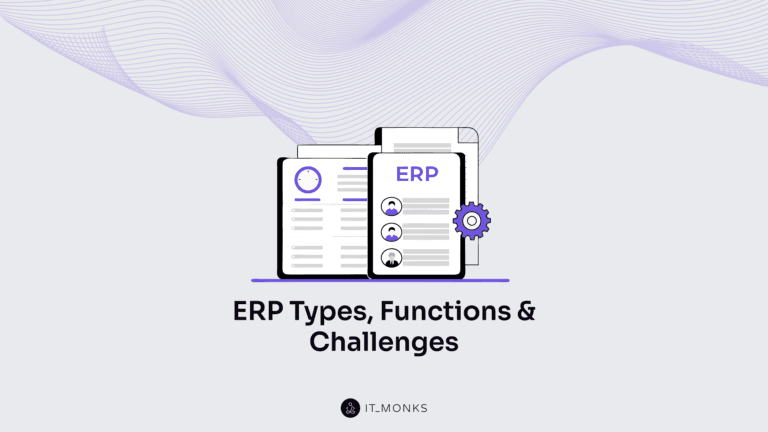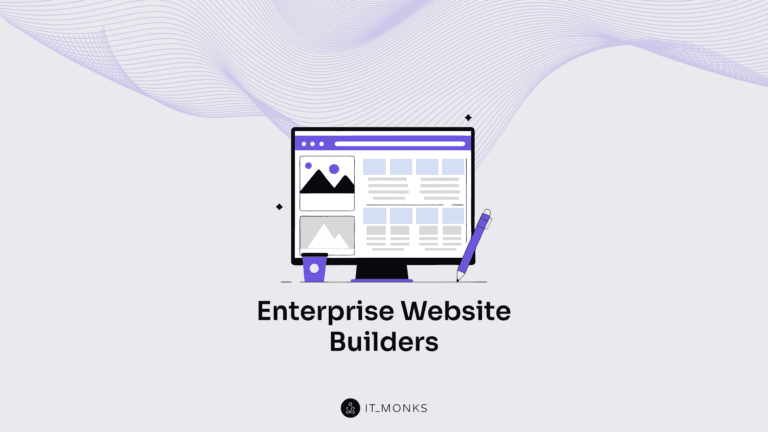Website Maintenance Checklist: 10 Steps to Keep Websites Running Smoothly
Table of Contents

Are you a website owner looking to keep your site running smoothly? Look no further. In this article, we present the ultimate website maintenance checklist, highlighting the crucial steps you need to take to ensure your website functions at its best.
What is a maintenance checklist?
Maintaining a website involves more than just regularly updating content. It requires proactive measures to optimize performance, security, and user experience. A website maintenance checklist covers essential steps to help you accomplish this.
By regularly conducting backups, updating software, monitoring site speed, optimizing for mobile devices, checking for broken links, and enhancing security measures, a checklist is a preventative measure against potential issues that may arise from neglecting website maintenance.
Mastering website maintenance and adhering to the steps outlined in our website maintenance checklist are crucial for every website owner. However, seeking professional assistance when developing a website maintenance plan is advisable. At It Monks agency, we offer WordPress maintenance services, providing businesses a convenient solution to entrust their WordPress maintenance needs.
Why is it important?
A website maintenance checklist is crucial for the success of your business. Here are three key reasons why:
- Improved user experience and customer satisfaction. A well-maintained website allows customers to navigate quickly, find information, and place orders without issues. Regular updates, removing broken links, and optimizing page loading speed contribute to a positive user experience, leading to higher customer satisfaction and increased chances of repeat business.
- Enhanced search engine ranking and online visibility. Updating your website with relevant and valuable content improves its attractiveness to search engines. Fixing broken links, optimizing keywords, and improving website performance contribute to higher search engine rankings, attracting more potential clients to your web store.
- Enhanced website security and data protection. A well-maintained website includes regular security checks and software updates to protect against cyber threats. Implementing SSL certificates and other security measures protects customer data and instills trust in your brand, ensuring the continuity of your business operations and protecting your reputation.
The consequences of neglecting website maintenance
Website maintenance is vital in keeping your site functioning at its best. Neglecting website maintenance can have serious consequences that can impact your online presence and business performance.
- Outdated software can make your website vulnerable to security breaches and attacks. Regularly updating your website software ensures you have the latest security patches and features, protecting your site from potential threats.
- Broken links can negatively impact user experience and search engine rankings. Checking and fixing broken links improves user navigation and helps search engines crawl and index your site more effectively.
- Slow website loading speed can lead to high bounce rates and poor user experience. By monitoring and optimizing site speed, you can ensure visitors stay engaged and satisfied with your site’s performance.
- Outdated content can make your site appear stagnant and uninteresting. Regularly reviewing and updating website content keeps it fresh, relevant, and appealing to visitors and search engines.
The ultimate website maintenance checklist
Now that we understand the importance of website maintenance and the consequences of neglecting it, let’s dive into the ultimate website maintenance checklist. This comprehensive checklist covers 10 crucial steps that will help you keep your site running smoothly and effectively.
Step 1: Regularly Update Your Website Software
Regularly updating your website software is essential for maintaining security and performance. This includes your content management system (CMS), plugins, themes, and other software that powers your website. Updating to the latest versions ensures you have the latest security patches and features, reducing the risk of security breaches and improving overall performance.
To update your website software, start by backing up your site to ensure you have a clean copy in case anything goes wrong during the update process. Then, check for updates within your CMS and update each component one by one, ensuring compatibility with your current setup. After updating, thoroughly test your site to ensure everything is functioning correctly.
Step 2: Backup Your Website Regularly
Regularly backing up your website is crucial in case of data loss, security breaches, or website crashes. Backing up your site ensures you have a copy of your website files, databases, and other vital data that can be quickly restored.
Various methods to back up your website include manual backups, using backup plugins, or utilizing your hosting provider’s backup services. Whichever method you choose, ensure that your backups are stored securely, separate from your live site.
Handling website backups requires careful attention to prevent the loss of crucial data and settings. If you lack the necessary skills to perform a comprehensive website backup without overlooking any details, we invite you to explore the WordPress Maintenance plans offered by IT Monks agency. Our plans include full website backups, plugin testing and updates, theme updates, and WordPress core updates.
Step 3: Monitor Website Loading Speed
Website loading speed is a critical factor that affects user experience and search engine rankings. Slow-loading websites can lead to high bounce rates, low conversions, and poor user satisfaction. Regularly monitoring your site’s loading speed allows you to identify and address any performance issues promptly.
Several tools, such as Google PageSpeed Insights, GTmetrix, and Pingdom, can measure your site’s loading speed. These tools provide insights into areas that need improvement, such as optimizing images, minimizing code, leveraging browser caching, and more.
Step 4: Check for Broken Links and Fix Them
Broken links can negatively impact user experience and harm your site’s reputation. Regularly checking for broken links and fixing them ensures visitors can navigate your site without encountering frustrating dead ends.
There are various tools and plugins available that can help you identify broken links on your website. Once identified, you can either update the link if the content still exists or remove the link altogether. Additionally, consider implementing redirect strategies for any broken links to ensure a seamless user experience.
Step 5: Review and Update Website Content
Website content is the backbone of your online presence. Regularly reviewing and updating your website content keeps it fresh, relevant, and engaging for your audience.
Start by identifying outdated or irrelevant content and either update it with current information or remove it altogether. Add new content, such as blog posts, articles, or videos, to provide value and attract new visitors. Updating your content improves user experience and signals to search engines that your site is active and relevant.
Step 6: Ensure Website Security
Website security is paramount in protecting your site from potential threats and attacks. Implementing robust security measures helps safeguard your site’s integrity, data, and visitors’ privacy.
Some essential security measures include using strong and unique passwords, enabling two-factor authentication, installing security plugins, and regularly scanning your site for malware and vulnerabilities. Additionally, consider implementing a firewall and ensuring that your hosting provider has adequate security measures.
Step 7: Optimize Website for Search Engines
Optimizing your website for search engines helps improve your visibility and organic rankings. By implementing SEO best practices, you can attract more targeted traffic to your site and increase your chances of conversion.
Start by conducting keyword research to identify relevant and high-performing keywords for your niche. Then, optimize your website’s meta tags, headings, content, and URLs to incorporate these keywords naturally. Additionally, ensure your site’s structure is easily crawlable by search engine bots, and consider implementing a sitemap and robots.txt file.
Step 8: Test Website Responsiveness
In today’s mobile-centric world, having a responsive website is crucial. With more and more users accessing the internet via mobile devices, ensuring your site is mobile-friendly is essential for providing a seamless user experience.
Test your website’s responsiveness across different devices and screen sizes to ensure it displays correctly and functions well on all platforms. Consider using tools like Google’s Mobile-Friendly Test or responsive design testing tools to identify and address any issues.
Step 9: Monitor Website Analytics
Monitoring website analytics provides valuable insights into your site’s performance, visitor behavior, and conversion rates. Analyzing these metrics allows you to make data-driven decisions to optimize your site and improve its overall effectiveness.
Utilize tools like Google Analytics to track key metrics such as traffic sources, bounce rates, page views, and conversions. Analyze this data regularly to identify trends, areas of improvement, and growth opportunities. Use this information to make informed decisions and implement strategies to enhance your website’s performance.
Step 10: Regularly Review and Improve Website Design
Website design plays a significant role in user experience and engagement. Regularly reviewing and improving your website design ensures it remains visually appealing, intuitive, and aligned with your brand identity.
Evaluate your site’s design elements, such as color schemes, typography, layout, and navigation. Consider user feedback, industry trends, and your competitors’ websites to identify areas for improvement. Implement changes gradually, testing them with user feedback and analytics to ensure they enhance the overall user experience.
Conclusion
Mastering website maintenance is essential for running your site smoothly and ensuring it delivers an exceptional user experience. By following the ultimate website maintenance checklist, you can optimize your website’s performance, enhance security, boost search engine rankings, and provide visitors with a seamless browsing experience.
While it can be valuable for website owners to learn how to maintain their websites, it is generally a better idea to seek professional help for website maintenance. At IT Monks, our main service is WordPress development, but we also provide maintenance packages as a support service. If you require more than initial development, we can assist with monthly maintenance tasks such as updating WordPress plugins and regularly backing up your website. Additionally, we offer packages that include content updates to ensure your website keeps up with your business’s changing needs. For further information, please don’t hesitate to contact us.
Contact

Send a Project Brief
You are currently viewing a placeholder content from Facebook. To access the actual content, click the button below. Please note that doing so will share data with third-party providers.
More InformationYou are currently viewing a placeholder content from Instagram. To access the actual content, click the button below. Please note that doing so will share data with third-party providers.
More InformationYou are currently viewing a placeholder content from X. To access the actual content, click the button below. Please note that doing so will share data with third-party providers.
More Information

